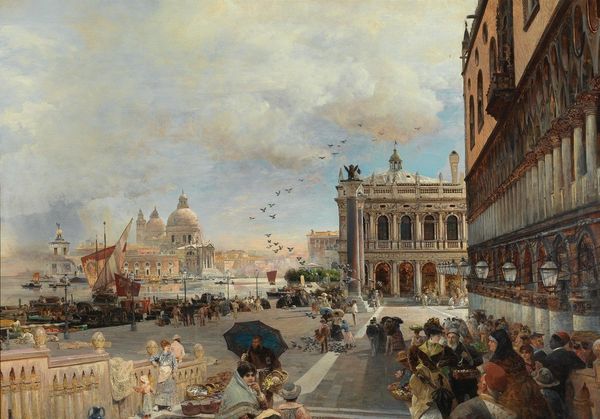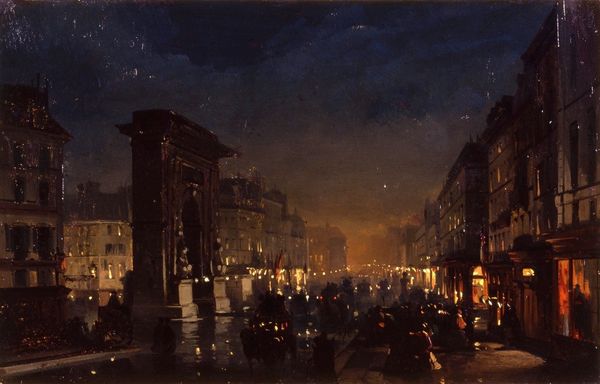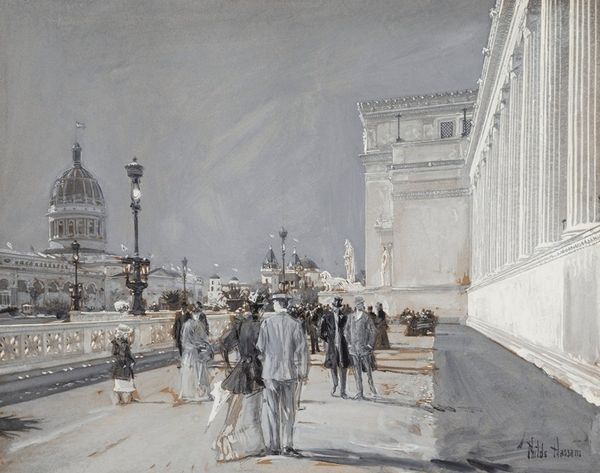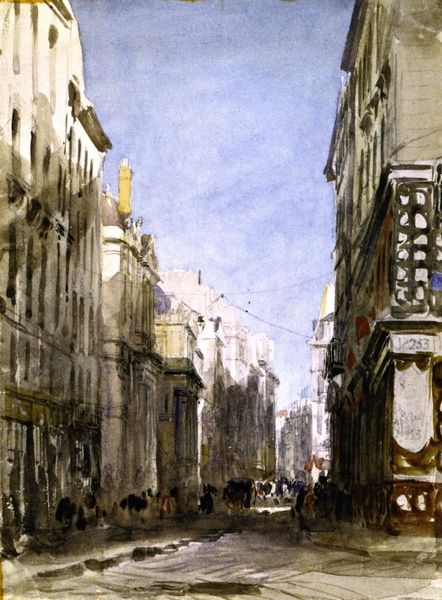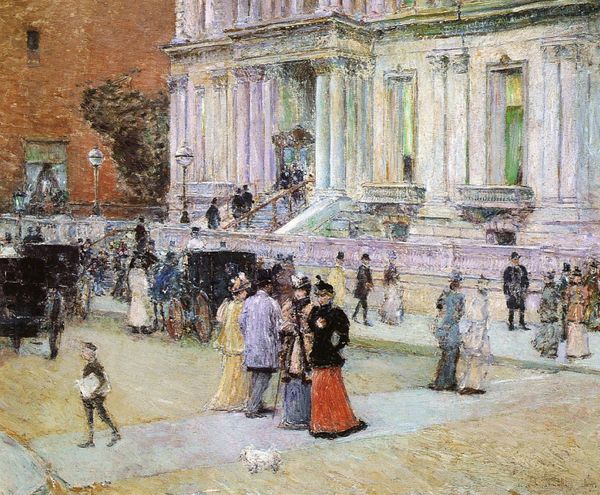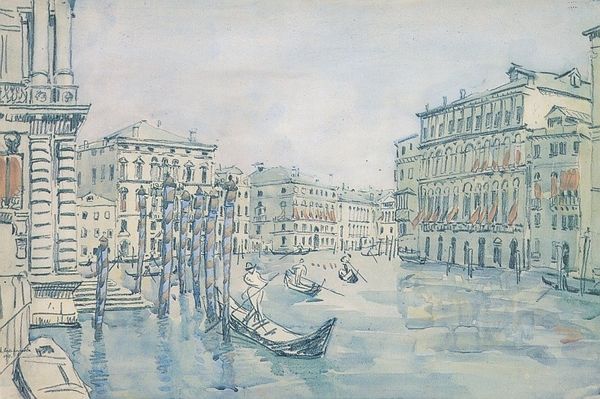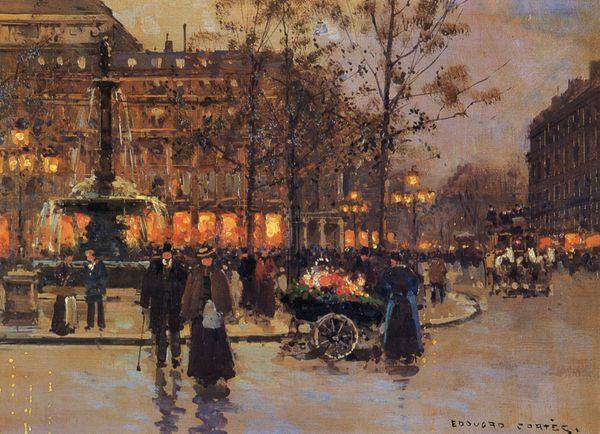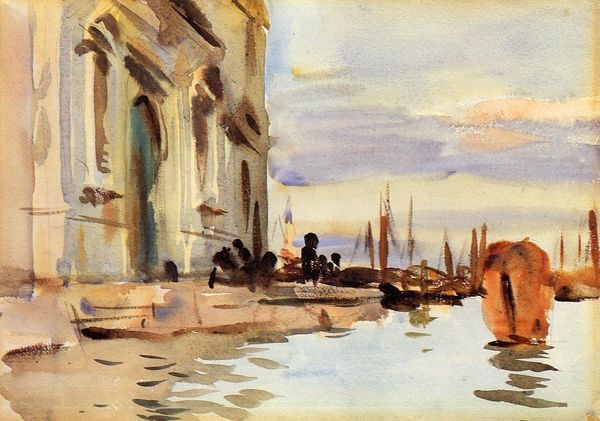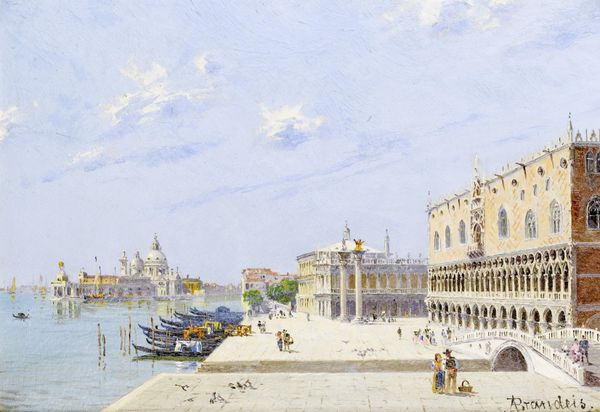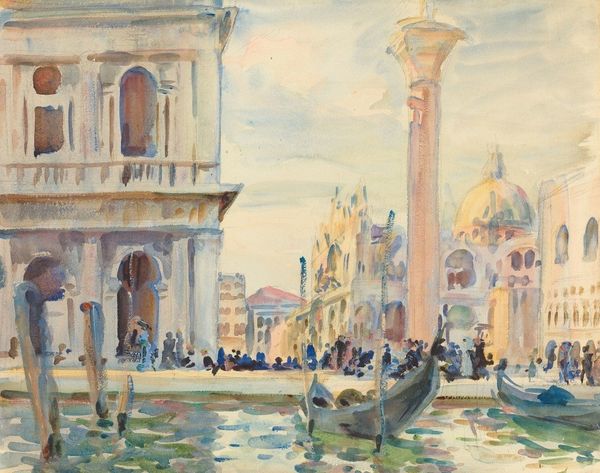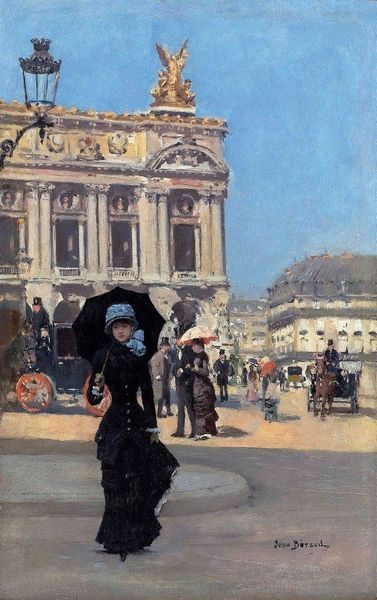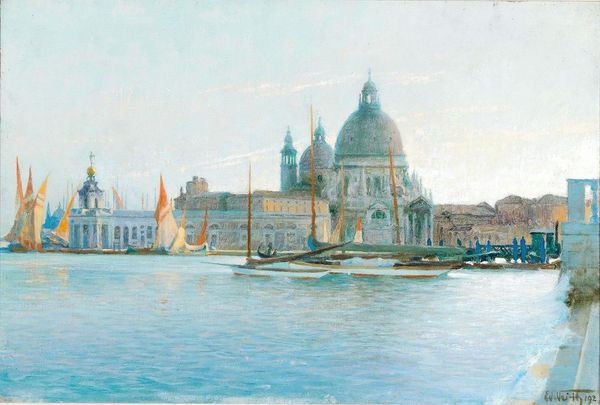
Copyright: Public domain
Curator: Today, we're exploring John Singer Sargent's "Café on the Riva degli Schiavoni," painted in 1882. It’s currently held in a private collection. Editor: My first impression is a sense of fleeting moments, the feeling of a warm Venetian afternoon captured with delicate washes of color. Curator: Precisely. Sargent masterfully uses watercolor, embracing the plein-air style popular at the time, to create a cityscape teeming with social life. Note how he suggests architectural detail and bustling crowds using only a few deft strokes. Editor: Yet, there's more to it than pure aesthetics. Consider the backdrop: the Riva degli Schiavoni was a crucial public space, a stage for the unfolding drama of Venetian society. Who frequented this café? What conversations filled the air? Whose Venice are we seeing? Curator: Structurally, Sargent focuses on capturing the effects of light and atmosphere on the buildings. The interplay of light and shadow gives depth to the façade of the Doge's Palace visible in the background. Editor: I'm struck by the fact that we see more foreground than architectural elements. I agree about the use of shadow; however, these were people with distinct backgrounds, navigating the intersections of commerce, class, and colonial networks—whose histories often remain unseen in such impressionistic vignettes. Curator: Fair enough, although, to analyze just from composition itself, notice that by not detailing their faces, Sargent turns individuals into compositional elements; anonymous shapes furthering the overall impact of the street and city scenes. It serves as a narrative of urban life captured on the go. Editor: Perhaps it is how his contemporaries were attempting to grapple with modernity, attempting to reflect shifting power dynamics. I think the people and buildings have stories to tell beyond what a formal analysis offers. Curator: Perhaps it also underscores the transience of modern experience itself, the blur of encounters defining life in a major metropolis at the time, don't you think? It makes me appreciate even further the painting and watercolor work on its own. Editor: I can certainly appreciate its allure beyond capturing one specific point in time, and while acknowledging its inherent limits to representing social history. Perhaps that push-and-pull keeps the art compelling and worthy of discussion to this very day.
Comments
No comments
Be the first to comment and join the conversation on the ultimate creative platform.
